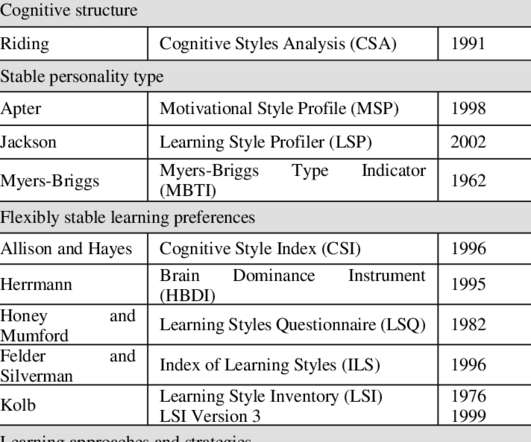How to Measure and Prove ROI in Training & Development
Acorn Labs
NOVEMBER 17, 2022
Change in attitude. You can see improvement (or lack thereof) from observing whether employees have improved their job performance since taking their training course. The Phillips Model. The Phillips Model of Training Evaluation is similar to the Kirkpatrick Model, only it adds a fifth level of analysis: ROI.























Let's personalize your content